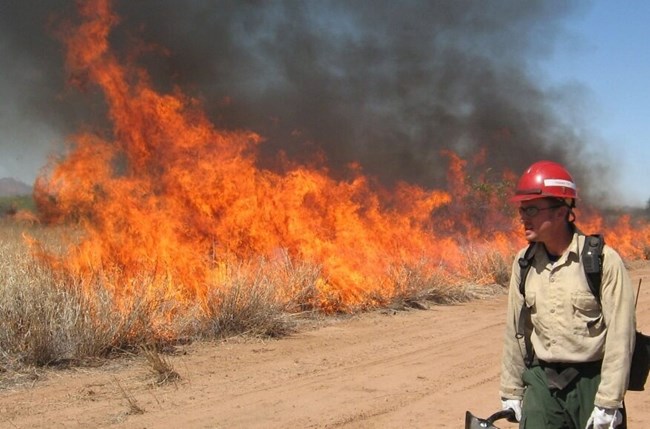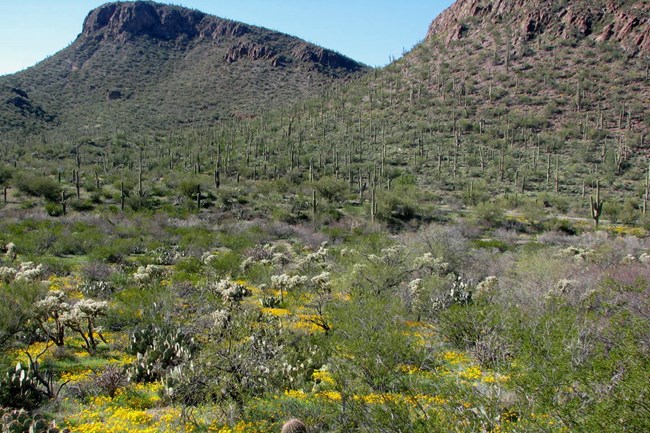What's the Big Deal?Non-native, invasive species are of great detriment to the overall health of an ecosystem. Put simply, they affect how an ecosystem looks and functions. Two of the largest hazards invasive plants introduce are the threat of fire and the crowding out of native species. 
NPS photo Fire in the Sonoran DesertThe Sonoran Desert was not made to sustain fire. Our plants and animals did not evolve with fire; thus, they are not adapted to it. Typical desert vegetation is sparse (there is a good amount of open space!), so a fire would not spread over a vast amount of land. Rather, it would naturally extinguish itself due to a lack of fuel. Many desert plants are fire-intolerant, and most of our animals move too slowly to escape or are not adapted to the fire-altered habitat. Fire can severely kill or damage much of the vegetation upon which animals depend for food and shelter. How does fire start?Desert fires can be caused by lightning strikes during our summer monsoon season. In a natural ecosystem, severe impacts are unlikely during this time due to high humidity and probable rainfall. However, with the presence of invasive species, the impact of fire becomes increasingly more threatening. Impact of invasive speciesRecurrent fires disrupt the natural ecosystem of the desert and could have long-term effects of decreasing our biodiversity. Of all the invasive species, two grasses that contribute the most to wildfires are buffelgrass and fountaingrass. These grasses create heavy, continuous fuel for wildfires, which presents a very real threat to the habitats and general safety of the native species in our ecosystem. These grasses grow rampantly, filling in most of the space that used to exist between vegetation in the Sonoran Desert. When lightning strikes, fire can be started and quickly spread by these grasses. 
NPS photo Threat to Native SpeciesThe Sonoran Desert, as it naturally exists, is incredibly biodiverse. Across the land, you will see an exquisite array of trees, shrubs, cactus and wildflowers. Now, imagine if you looked across the land and only saw grassland. Unfortunately, the rampant spreading of invasive species poses this exact threat. |
Last updated: August 4, 2025
